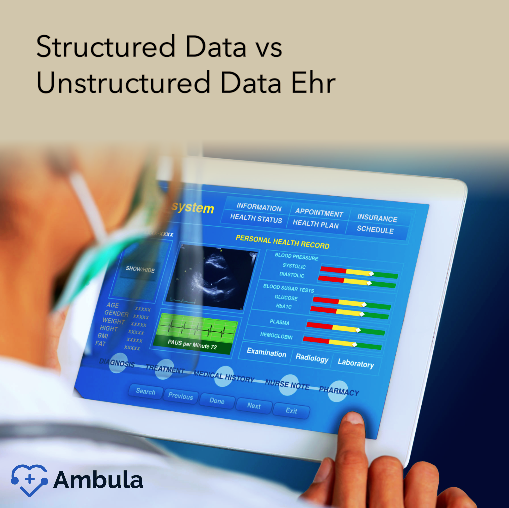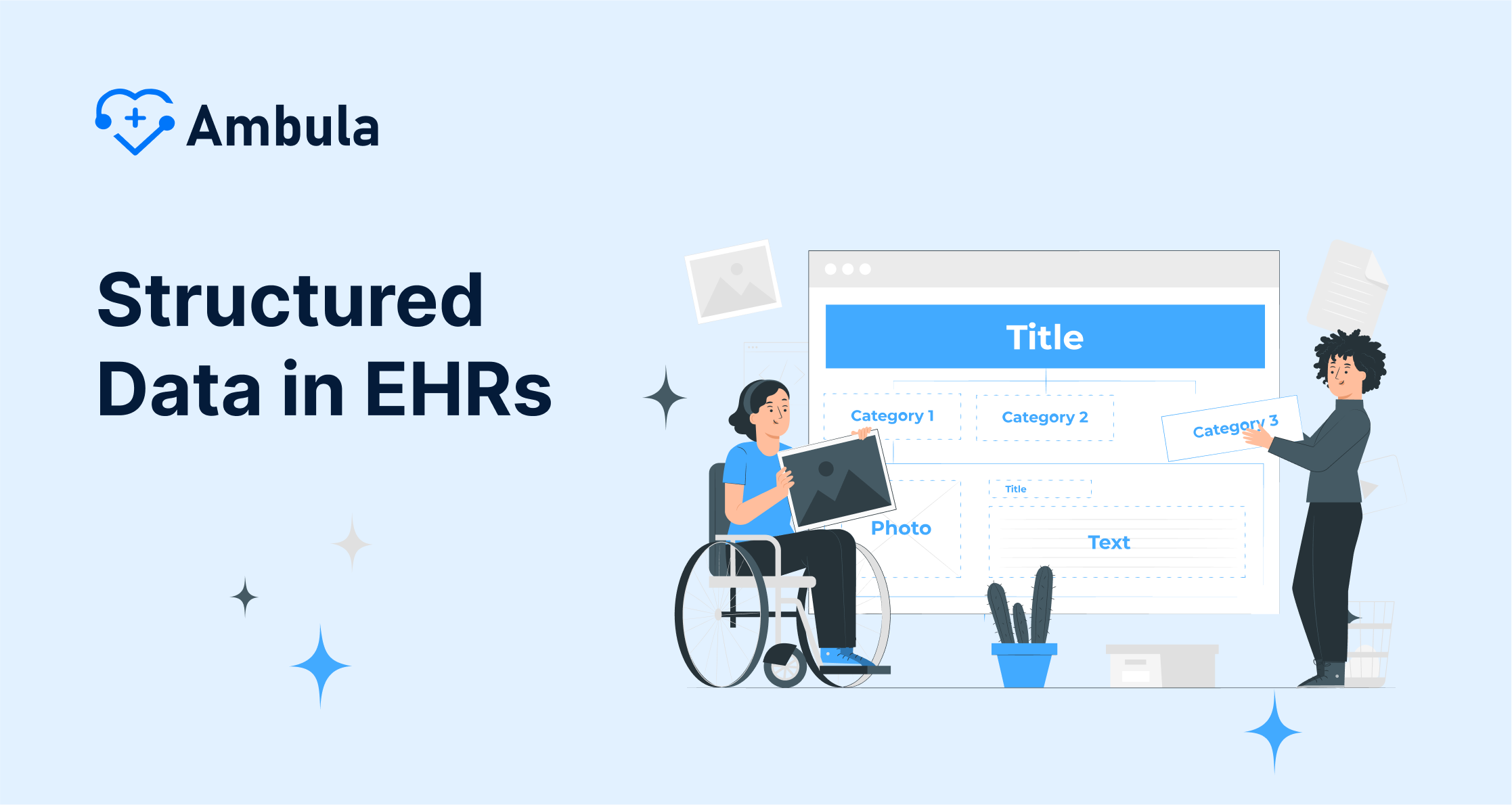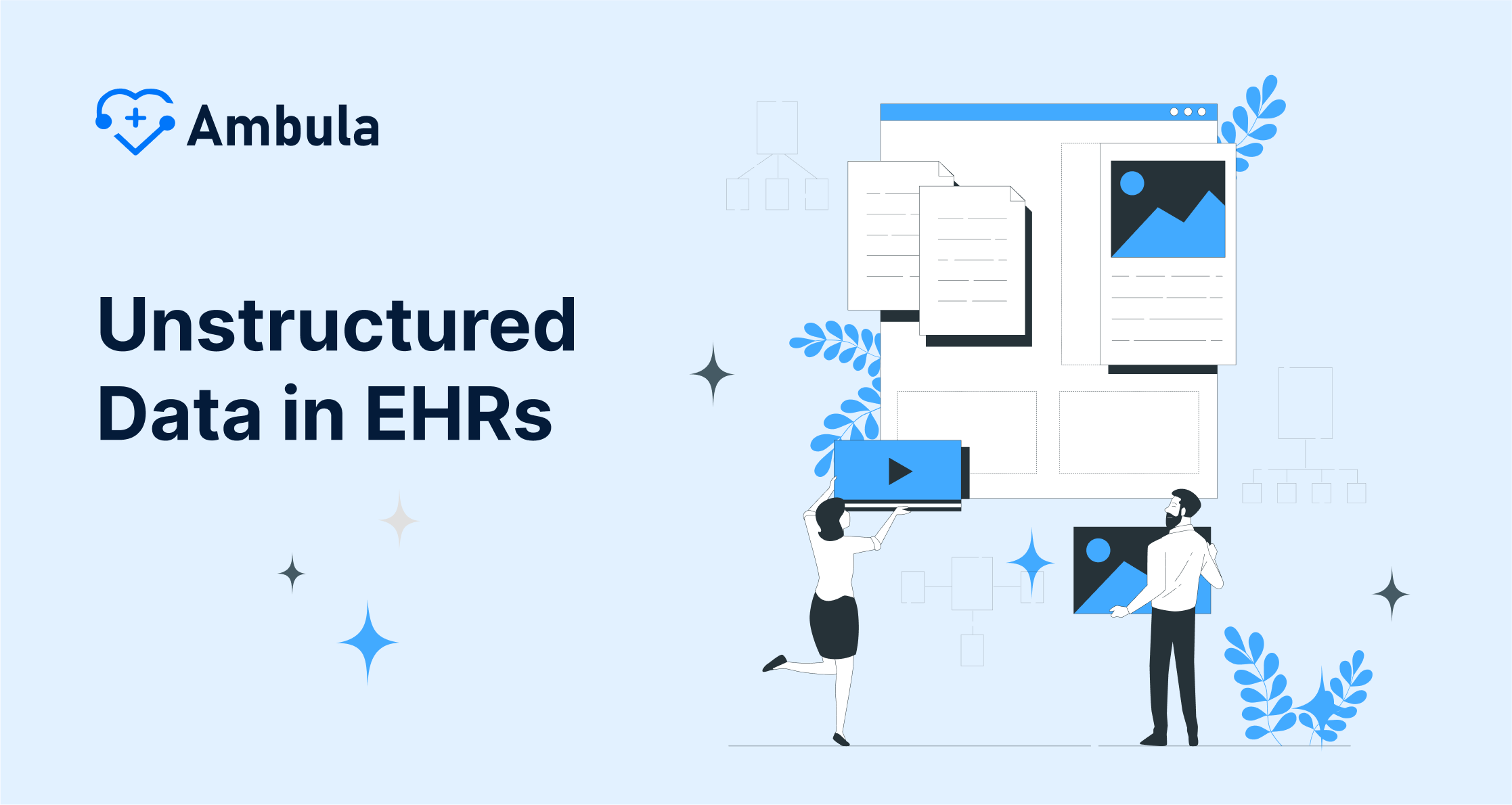
In the healthcare industry, electronic health records (EHRs) have become an indispensable tool for managing patient information and facilitating clinical decision-making. EHRs store a vast amount of data, encompassing both structured and unstructured formats. While structured data is neatly organized and easily searchable, unstructured data presents challenges and opportunities. Understanding the distinctions and synergies between these two data types is crucial for maximizing the value of EHRs and driving improvements in patient care.
Structured Data in EHRs
Structured data refers to information that adheres to a predefined format and can be readily stored, accessed, and analyzed using traditional database systems. In EHRs, structured data typically includes demographic information, vital signs, laboratory test results, medication prescriptions, and billing codes. This type of data is highly standardized and consistent, making it ideal for quantitative analysis and population health studies.
Structured data plays a pivotal role in supporting clinical decision-making. For instance, physicians can quickly review a patient’s medication history to identify potential drug interactions or assess the effectiveness of treatment regimens. Moreover, structured data can be aggregated and analyzed to identify trends and patterns within patient populations, providing valuable insights for clinical practice guidelines and public health interventions. Examples of structured data in EHRs include:
- Demographic information: Patient name, address, date of birth, gender, etc.
- Vital signs: Blood pressure, pulse rate, temperature, height, weight
- Laboratory test results: Numerical values of blood tests, urine tests, etc.
- Diagnostic codes: ICD-10 codes for diagnoses
- Medications: Prescriptions, dosages, administration methods
Unstructured Data in EHRs
Unstructured data, on the other hand, lacks a predefined format and cannot be easily processed by traditional database systems. This category encompasses various forms of text-heavy information, including clinical notes, discharge summaries, radiology reports, and patient narratives. Unstructured data is rich in contextual information and provides a holistic view of a patient’s medical history and clinical course.
However, the unstructured nature of this data poses challenges for analysis and integration with structured data. The sheer volume of text, coupled with variations in medical terminology and documentation styles, makes manual review and extraction of information laborious and prone to errors. Examples of unstructured data in EHRs include:
- Progress notes: Free-form narratives written by healthcare providers
- Discharge summaries: Brief summaries of the patient’s hospital stay
- Radiology reports: Descriptions of medical images
- Clinical notes: Notes from nursing staff, therapists, etc.
- Patient narratives: Patient’s personal accounts of their health experiences
Key Differences between Structured Data & Unstructured Data
The primary distinction between structured and unstructured data lies in their ability to be readily processed by machines. Structured data is explicit and easily quantifiable, allowing for straightforward analysis using algorithms and databases. Unstructured data, on the other hand, is inherently qualitative and often ambiguous, requiring advanced techniques like natural language processing (NLP) and machine learning (ML) to extract meaningful insights.
In the context of EHRs, structured data plays a crucial role in providing readily available, quantitative information for clinical decision-making. Unstructured data, however, holds immense potential for enriching patient care by providing deeper insights into patient experiences, clinical context, and potential risk factors.
Effectively harnessing both structured and unstructured data is essential for realizing the full potential of EHRs in improving patient care, outcomes, and healthcare research. This is particularly true in specialties like psychiatry, where integrating a psychiatry EMR software can facilitate comprehensive documentation and analysis of both quantitative metrics and narrative clinical notes.
Combining the strengths of both data types can lead to more comprehensive and personalized healthcare experiences.
Leveraging the Power of Both Structured and Unstructured Data
Despite their distinct characteristics, structured and unstructured data complement each other in providing a comprehensive understanding of a patient’s health status. Structured data offers quantifiable information, while unstructured data provides context and nuance. Combining these two data types can yield valuable insights that would not be possible from either data type alone.
Advancements in natural language processing (NLP) and machine learning (ML) are transforming how unstructured data is analyzed and integrated with structured data. NLP algorithms can identify key concepts, extract relevant information, and classify medical text, enabling the extraction of valuable insights from unstructured clinical narratives.
Integrated structured and unstructured data is being used in various healthcare applications, including:
-
Clinical decision support: Combining structured data on medication allergies and unstructured data on patient-reported symptoms can help identify potential adverse drug reactions.
-
Risk stratification: Analyzing structured data on patient demographics and unstructured data on clinical notes can predict the likelihood of readmissions or hospitalizations.
-
Patient engagement: Analyzing unstructured data from patient surveys and feedback can identify areas for improvement in patient satisfaction and quality of care.
Challenges and Considerations
Despite the potential benefits of data integration, several challenges need to be addressed.
Data integration and interoperability: Different healthcare systems may use different data formats and standards, making it difficult to integrate data seamlessly. Standardized data formats and protocols are essential to facilitate information sharing across healthcare organizations and enable comprehensive patient care.
Data privacy and security: EHRs contain sensitive patient information, and robust data governance frameworks are essential to protect patient privacy and prevent unauthorized access. Healthcare providers must adhere to strict data security regulations and implement appropriate safeguards to safeguard patient confidentiality.
Ethical considerations: Using patient data for research or analytics raises ethical concerns regarding patient consent, data ownership, and the potential for discrimination. Healthcare providers must be mindful of these ethical considerations and ensure that patient data is used responsibly and with appropriate safeguards in place.
The Future of Data-Driven Healthcare
The future of healthcare is poised to be increasingly data-driven, with artificial intelligence (AI) and machine learning (ML) playing a central role in extracting insights from EHRs and other healthcare data sources. AI algorithms can analyze large volumes of structured and unstructured data to identify patterns, predict outcomes, and personalize treatment recommendations.
Predictive analytics, powered by AI and ML, can help identify patients at risk of adverse events, enabling proactive interventions and improved patient outcomes. Additionally, AI-driven personalized medicine can tailor treatment plans to individual patient characteristics and genetic profiles, leading to more effective and targeted treatments.
Dr. John Halamka, Chief Information Officer at Beth Israel Deaconess Medical Center, emphasizes the importance of structured data in healthcare. He states, “Structured data is essential for interoperability and analytics in healthcare. By organizing health information into standardized formats, such as SNOMED CT or LOINC codes, we can ensure that data is consistently captured and exchanged across systems. This enables healthcare providers to access comprehensive patient records and derive meaningful insights for clinical decision-making and population health management.”
Conclusion
Structured and unstructured data within EHRs provide a wealth of information that can be harnessed to improve patient care, enhance clinical decision-making, and advance healthcare research. By leveraging technological advancements and addressing the associated challenges, healthcare providers can effectively integrate these two data types to deliver personalized, data-driven care that optimizes patient outcomes and population health.






